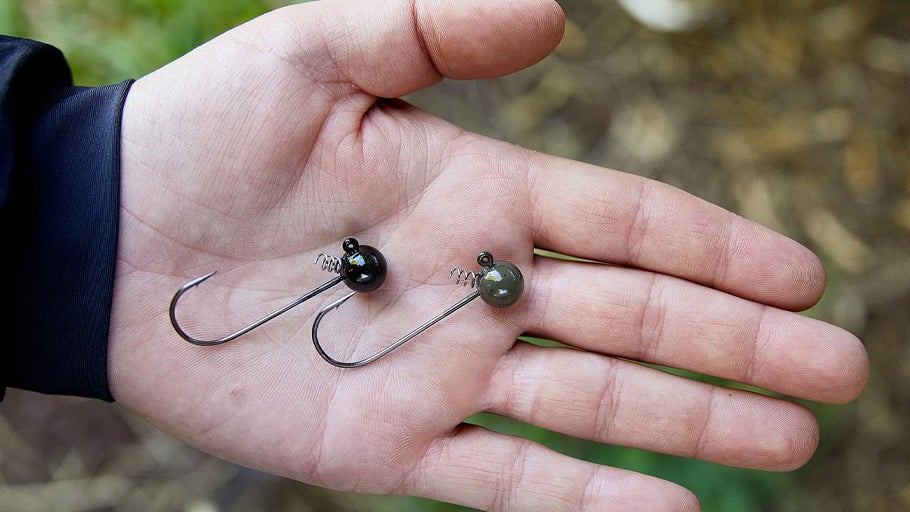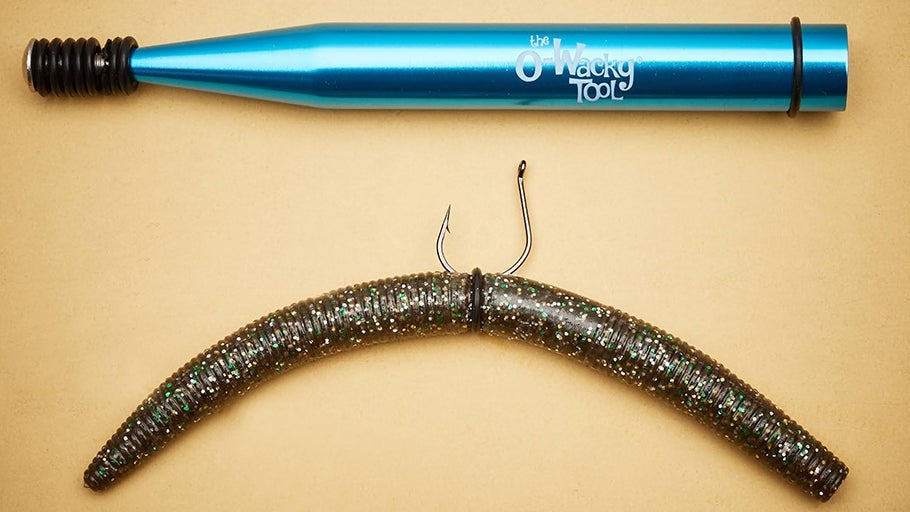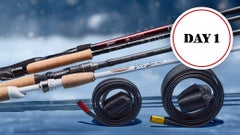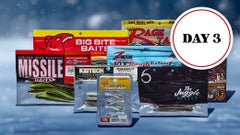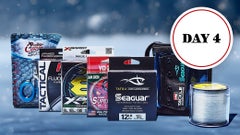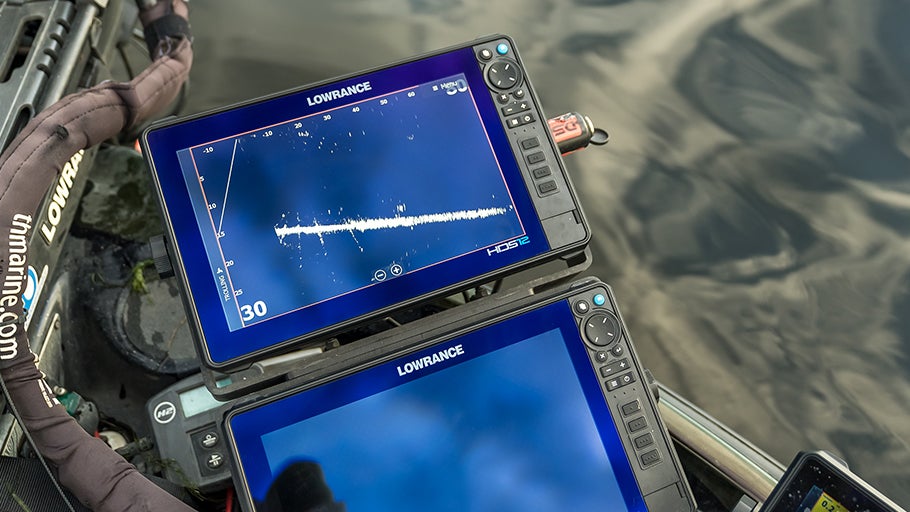
Practical Bait Finesse Fishing for Bass
Since bait finesse first burst onto the U.S. fishing scene a handful of years ago, it has evolved from a novel, enthusiast-driven subgenre into a critical finesse fishing component for serious bass anglers. Now firmly cemented in our rod lockers, bait finesse (often referred to as BFS or BF) has made us question the necessity of spinning tackle for light-line tactics. While we still treasure our spinning rods, and find situations where they are imperative, we have discovered a number of reasons to replace them with bait finesse setups for everyday bass fishing.
All Fluoro, No Problem!
In situations where it’s beneficial to switch to straight fluorocarbon, like clear water, bait-finesse gear makes it practical to ditch the braid. Unlike spinning tackle, which is subject to line twists or line jumping off of the spool, casting gear manages fluorocarbon with ease, while still giving you the option to use braid-to-leader when it's advantageous.
Another situation where fluorocarbon is beneficial for finesse fishing is single hook applications, like small jigs and swimbaits. The added stretch of fluorocarbon helps prevent straightening out light wire hooks and bolsters your stealth around finicky fish. By eliminating a connection knot, you also remove a possible fail point and make re-tying quicker, saving you valuable time in a tournament setting.
Casting Accuracy & Efficiency
One of the strongest mechanical advantages afforded by bait finesse is the ability to make short, accurate pitches with small baits. While it’s possible with spinning gear, the efficiency and pinpoint precision is unmatched with a BFS setup. Not only is it easier to place tiny lures into tight spots around docks and small pockets of vegetation, you're also able to precisely control line release with your thumb. This increased control helps slow your bait down before it lands, creating a softer, stealthier entry—an important factor when fishing around shallow and/or clear water. Whether you’re flicking a minnow a few feet from your bow or picking apart boat docks with a three-inch Senko, it’s easy to put small baits right on the money with a finely tuned bait-finesse setup.
Broader Definition of Finesse
As the popularity of bait finesse has increased in recent years, the definition of “finesse” has also changed. Baits continue to get smaller and smaller as the casting capabilities of bait-finesse reels improve, making it possible to effectively fish baits that used to be deemed “too small”. Even traditional medium-light spinning tackle can be a touch too heavy to effectively fish diminutive morsels, like a Lucky Craft LC 0.1 FTS Squarebill Crankbait. With bait-finesse gear you can now effectively launch small baits weighing 1/16oz or even lighter, making it easy to match the hatch when bass are keyed in on fry or bite-sized baitfish.
For applications that demand top-end speed, like tiny chatterbaits or lipless cranks, it’s worth noting that you can lose a few inches per turn with a bait-finesse reel when compared to a larger 3000+ size spinning reel. Outside of that caveat, you can usually improve casting distance with your favorite finesse baits by implementing BFS gear, especially on the lighter end of the spectrum.
Growing Versatility
When BFS fishing first started to gain a foothold in the States, small jerkbaits, crankbaits, and swimbaits were the applications that anglers gravitated towards first. As bait-finesse gear became more accessible, anglers started branching out with other techniques, like the float ‘n fly and spybaits. Simultaneously, companies rushed to downsize all sorts of baits, like topwaters and vibrating jigs, growing the breadth of the bait-finesse category very quickly.
The increased versatility of bait-finesse tackle diminishes some of the nicheness originally associated with the high-end tackle, improving the practicality for anglers looking to replace spinning setups. Some of these techniques even experience better performance with casting gear, like increased torque for cranking and ease of manipulation when walking small poppers and spook-style baits.
The popularity of BF has coincided with the rise of forward-facing sonar and TONS of small, minnow-style baits. Check out our BFS for FFS article to see all of the reasons you should consider bait-finesse gear simply for improving the effectiveness of your forward-facing sonar.
Reduced Deck Clutter
On a bass boat, it’s important to maximize every inch of space, especially on the front deck where you’re going to spend the majority of your time. By nature, casting rods are typically stored on the port side of the boat opposite the driver so they are less likely to contact the console, while spinning rods are stored on the starboard side as they are short and able to lie “flat” on one side. By swapping your spinning tackle out for bait-finesse casting gear, and channeling your inner Bryan Thrift, you can integrate most of your finesse gear into your casting rod selection and clear out a lot of deck space. This also translates to your rod locker if it has casting-specific storage. By increasing your total carrying capacity and decluttering your front deck, you can stay organized and keep more tools at your disposal—a critical element for tournament bass anglers.
More Fun!
Possibly the strongest selling point for the implementation of bait-finesse gear is the fun factor. Drop stepping and delivering a powerful hook set with a Neko rig and having a two pounder double your rod over like an eight pounder just elevates the excitement of finesse fishing. Every time you lock horns with a decent fish, it feels like a big one. And when you finally connect with a big one, the experience is borderline addicting. Outside of bass fishing, you can also implement bait finesse for a whole host of other species, like crappie and trout fishing to boost your fun factor.
Frequently Asked Questions
What's the best BFS Reel?
A good selection of bait-finesse reels are currently available. Reels in this category are typically compact in size and come with lightweight spools that are often quite shallow for holding a small amount of light line. If you are looking for a modestly priced reel for bait-finesse fishing, three solid choices to consider include the Shimano Curado BFS, Daiwa Tatula BF70, or the Ark Gravity BFS.
What are BFS Reels used for?
The technique of bait-finesse fishing is particularly effective when targeting smaller fish, like spotted bass, crappie, and trout. Bait-finesse casting reels are specially designed with finely-tuned braking systems and lightweight spools that are perfect for super-light lures and ultra-light line.
What is the best line for BFS fishing?
Traditionally, most bait-finesse applications utilize fluorocarbon lines from 2lb on the low end to 8lb on the high end. Alternatively, some anglers choose to utilize braid in the 8–14lb range with a fluorocarbon leader tied to the end. Using this setup minimizes stretch and maximizes sensitivity.
What is the best rod for BFS fishing?
When you are identifying a rod to match your BFS reel, it's always good to start with these two questions: What are you going to use the rod for? and How much do you want to spend?
For single-hook applications, lean towards a slightly quicker taper for more efficient hooksets when fishing with baits like jigs and soft plastics. Choosing a rod with a fast or extra-fast rating will get the job done. If you plan on using the rod for treble-hook applications, a moderate or moderate-fast taper provides just enough cushioning to work baits properly, lets a fish fully engulf the bait, and protects smaller hooks from being ripped out during battle.
Suggested Articles

